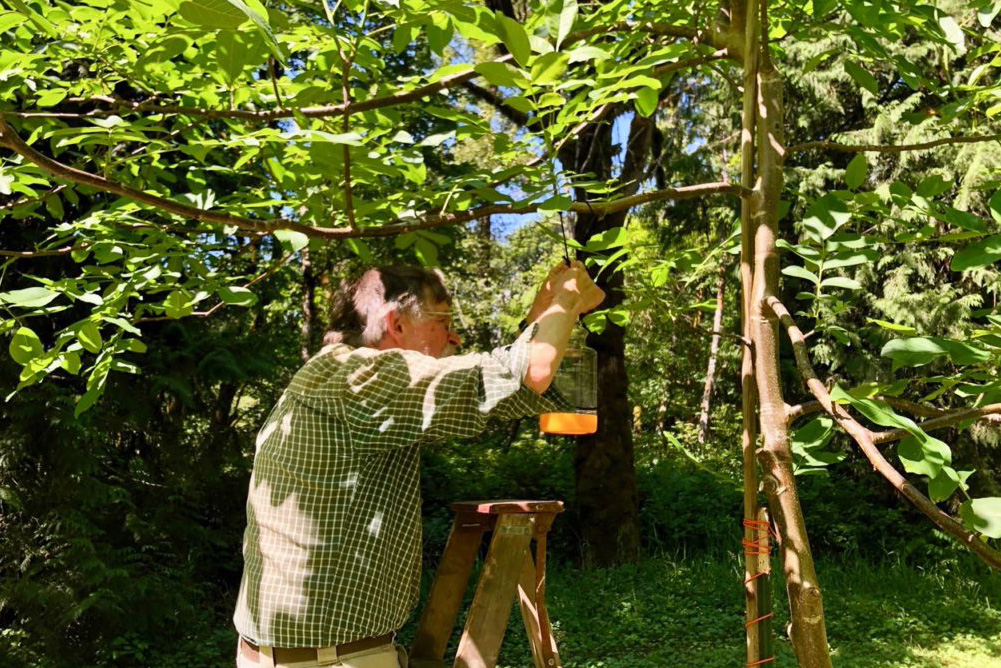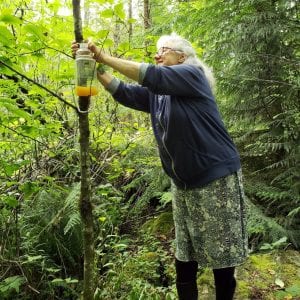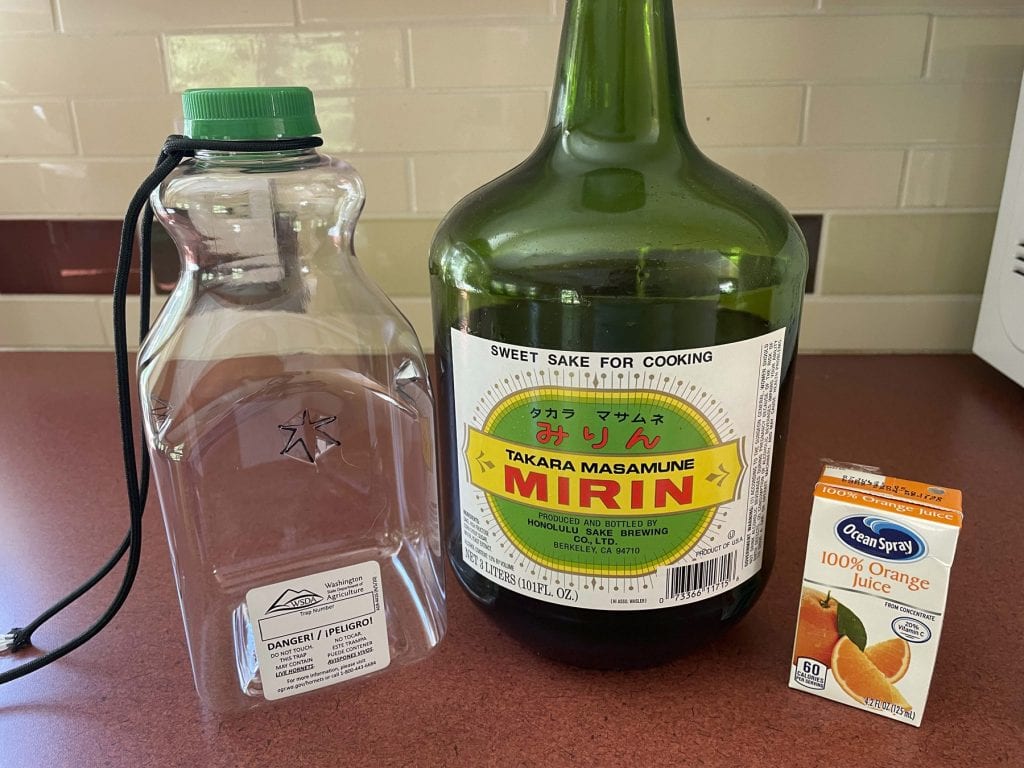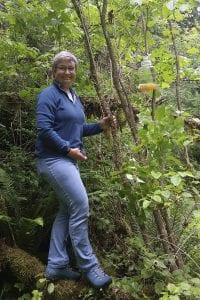When the invasive Asian giant hornet (Vespa mandarinia), called “murder hornets” in national headlines, was discovered in nearby British Columbia, the Pacific Northwest—and especially Whatcom County—went on alert. Capable of spreading quickly and devastating already vulnerable North American bee populations, Provincial and Canadian government agencies, U.S. local, state and federal government agencies, nonprofits and beekeepers launched a colossal, coordinated effort to find and stop the hornet invaders before they could spread further.
The U.S. Department of Agriculture (USDA) in partnership with the Washington State Department of Agriculture (WSDA) put out a call for the public to help. Bellingham-based nonprofit Whatcom Land Trust was one of many conservation organizations that mobilized its team of citizen scientists last summer to track and prevent the spread of this invasive species in Whatcom County. This year, that effort continues in hopes that we, as a community, can protect local bee populations and their vital role as pollinators on farms and in our vulnerable natural environment.
Another Hit to an Already Fragile System
Before Asian giant hornets arrived on the Salish Coast, bees across North America were in significant peril. According to the Center for Biological Diversity, more than half of North America’s 4,000 native bee species were already in decline, with one in four species at risk of extinction. A 2019 survey from the Bee Informed Partnership found that nearly 40% of U.S. beekeepers lost their colonies during the previous year. Compared to 1947, the U.S. honeybee population had declined by 60%. Those declines were caused, in part, by a combination of factors like pesticide sensitivity, habitat decline, the spread of mite and fungal diseases, and the still mysterious Colony Collapse Disorder.

Damage to North American bee populations will impact the $15 billion worth of food crops in the U.S. pollinated by bees each year. National and global food security, related jobs and our agricultural economy could all experience serious consequences long-term.
Asian Giant Hornets in Whatcom County
Scientists already understood the dangers the hornets posed. They knew a single group of Asian giant hornets can attack and permanently destroy several bee hives in a matter of hours. Their sharp mandibles (jaws) quickly decapitate thousands of bees. Then they collect carcasses and growing bee larvae and transport them back to their nest to feed their own young. The nickname murder hornets emerged because they are also capable of killing humans, up to 50 per year in Japan, for example.

A nest of Asian giant hornets was first discovered and destroyed on Vancouver Island in Nanaimo, B.C., in August 2019. The hornets likely came as stowaways on container ships from their native range in northern India to East Asia. The first evidence of their arrival in Custer, WA—devastated hives—were discovered in November and December 2019.
The WSDA was suddenly faced with a monumental effort, during a global pandemic, and they could not respond without a lot of help. In Whatcom County alone, they needed to monitor more than 2,500 square miles for individual hornets and their nests—like searching for a hornet in a haystack. The call in May 2020 was for help from citizen scientists—volunteers from the public—to trap these unwelcome invaders and hopefully find their nests before they could spread.
Whatcom Land Trust (The Trust) was among many conservation groups and thousands of individuals that made and monitored traps weekly. Those efforts eventually led to the discovery of the first nest in the U.S., southeast of Blaine in October 2020. A small nest of about 500 individuals was destroyed and collected for research purposes just days later.
This year, beginning July 1, extensive monitoring efforts will continue with even greater urgency. Scientists don’t know how many nests remain in our area. Some question whether we can stop the spread before they overwhelm the Pacific Northwest and beyond, like the Gypsy moth, zebra mussel and so many other invasive species.
Whatcom Land Trust Monitoring Efforts
Whatcom Land Trust’s mission already aligned well with the USDA and WSDA’s goal to protect pollinators. For the past 20 years, the Trust has secured interest in land and promoted its stewardship in order to preserve and protect wildlife habitat, scenic, agricultural and open space lands in Whatcom County for future generations. Having protected more than 24,000 acres of land in Whatcom County, including more than 1,800 acres of agricultural land worked by Whatcom County farmers, the Trust could provide lots of hornet monitoring sites. The Trust also already had a team of citizen scientists working on restoration and monitoring efforts on its properties.

Stewardship Director Jennifer Mackey was able to quickly mobilize the community to pitch in on the effort.
“Last year our citizen scientists monitored about 50 Asian giant hornet traps weekly on various Whatcom Land Trust protected properties between July and November 2020—a period of 22 weeks,” Mackey says. “Luckily for the bees we didn’t find any of these hornets last year. This year we’ll use a similar, but simplified, method and all the materials will be provided by the WSDA.”
Again this summer and fall, more than 40 of the Trust’s citizen scientists will monitor more than 30 traps on many Land Trust properties. “Based on scientific findings from last year, our traps this year will be located closer to the western coast of the county,” says Mackey. “We’ve recently acquired additional California Creek properties in Blaine so we’ll have several traps there this year. Most of our traps are on Trust properties that don’t have public access. A few are also on conservation easements with private land owners.”
The traps and their monitoring aren’t sophisticated. Made from 2-liter plastic bottles, the traps are baited with orange juice and rice cooking wine, attracting hornets but deterring native species, then hung in trees. Locations are logged through a phone app and contents are strained weekly and then reset with fresh bait. This year trap contents will only need to be photographed and shipped if an Asian giant hornet is discovered or suspected.

Although WSDA will welcome samples from citizen scientists throughout Washington State, its focus is concentrated in Whatcom, Skagit, Island, San Juan, Snohomish, King, Jefferson and Clallam Counties.
Members of the public are invited to join an Asian giant hornet Watch Facebook group and a WSDA e-newsletter for ongoing updates.
Solving Problems with Help from Citizen Science
Long-time Trust donor and volunteer Monique Brewer was one of more than 40 citizen scientists that monitored 46 traps last. “I believe in community and the Trust’s mission to protect these special places for wildlife and long-term conservation. I’ve made it my own mission to educate our community on what Whatcom Land Trust is doing for our community,” says Brewer, who is a biochemist and Whatcom Community College Chemistry Instructor. “This year we’ll add traps to the Barkley Village area since a hornet was found by others in that area last year. I monitored about a dozen traps last year and will do almost as many this year.”
You don’t have to be a scientist to become a citizen scientist. “Our citizen scientists come from a range of backgrounds,” Mackey says.
Brewer adds: “Some are lawyers, administrators, teachers. With education, anyone who’s interested can learn to help.”
Protecting Other Species Too

The Trust is leasing a small area to local bee keepers to park their hives on three Trust properties, including its Ladies of the Lakes property on South Lake Whatcom. The property benefits from more pollinators and the resulting honey will be sold this winter as a fundraiser and educational opportunity.
In addition, Brewer has worked for several years with Whatcom County Amphibian Monitoring Program Manager Vikki Jackson to monitor Trust properties for the invasive American bullfrog, a significant threat to the native Oregon spotted frog. Listed as threatened since 2014 under the federal Endangered Species Act and Endangered in Washington State, many of the remaining Oregon spotted frogs in Whatcom County are found on Trust properties.
“As far as protecting our wildlife, the Land Trust does so much. You have to look further in the distance time-wise to understand the importance of what they’re doing,” says Brewer. “I imagine what things will look like in 10 years, in 20. It’s good to know this habitat will be here.”
Check out www.whatcomlandtrust.org or sign up for its e-newsletter for more information on how you can support Asian giant hornet monitoring and other efforts in Whatcom County.










































